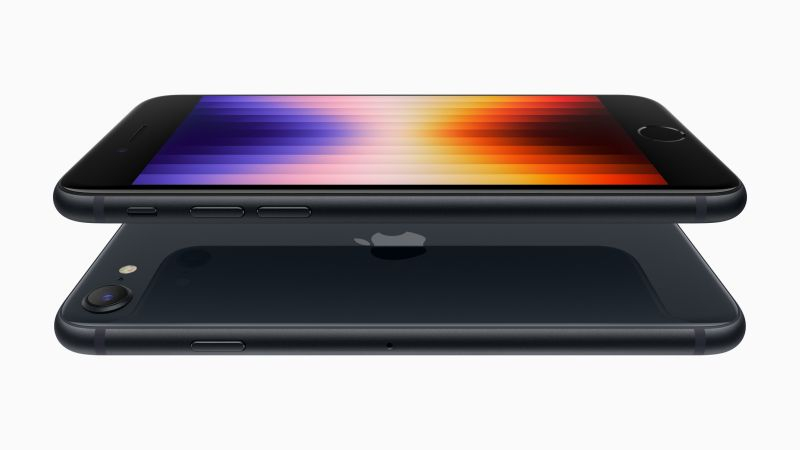In terms of processor development activities, Apple and Qualcomm are competitors, and the former company is very burdened by its dependence on the latter for the modems used in smartphones. Apple has been making attempts to develop its own for a long time, but the new iPhone SE coming out next year could be the first Apple smartphone to use such a modem.

Image Source: Apple
This was reported by the resource 9to5Mac, which could not calm down after the release of a Bloomberg publication describing the innovations of the next generation iPhone SE, and preferred to collect additional information about the upcoming new product, which is scheduled to debut in the spring of next year. Through their channels, 9to5Mac representatives managed to find out that the so-called iPhone SE 4 (V59) will be similar in appearance to the iPhone 14 and will lose the physical Home button on the front panel with the Touch ID function. The resolution of the OLED display will be 1170 × 2532 pixels, like the iPhone 14, but the cutout at the top of the display for the front camera and sensors will remain, preserving the presence of Dynamic Island as the prerogative of more expensive models. By the way, the new iPhone SE will cost from $459, surpassing its predecessor in price by at least $30.
But the presence of a modern A18 processor combined with 8 GB of RAM will allow the new iPhone SE to support a set of Apple Intelligence functions. The base iPhone 16, which offers a 5-core graphics subsystem, will share the processor with the new product. The iPhone SE 4 will borrow the main camera with a resolution of 48 megapixels with a wide-angle lens from the iPhone 15, but it will lose ultra-wide-angle and telephoto optics. The front camera will be 12 megapixel.
IPhone SE 4 will use Apple’s own modem, which will support 5G, Wi-Fi, Bluetooth and GPS. This assembly was designated Centauri and was created with the participation of former Intel specialists who joined Apple after the 2019 deal. Since then, Apple has made repeated attempts to create a 5G modem on its own, and there is a chance that it has now succeeded. A proprietary modem will not only reduce costs and simplify its integration at the software level, but will also reduce power consumption when transmitting information, especially in smartphone battery saving mode.